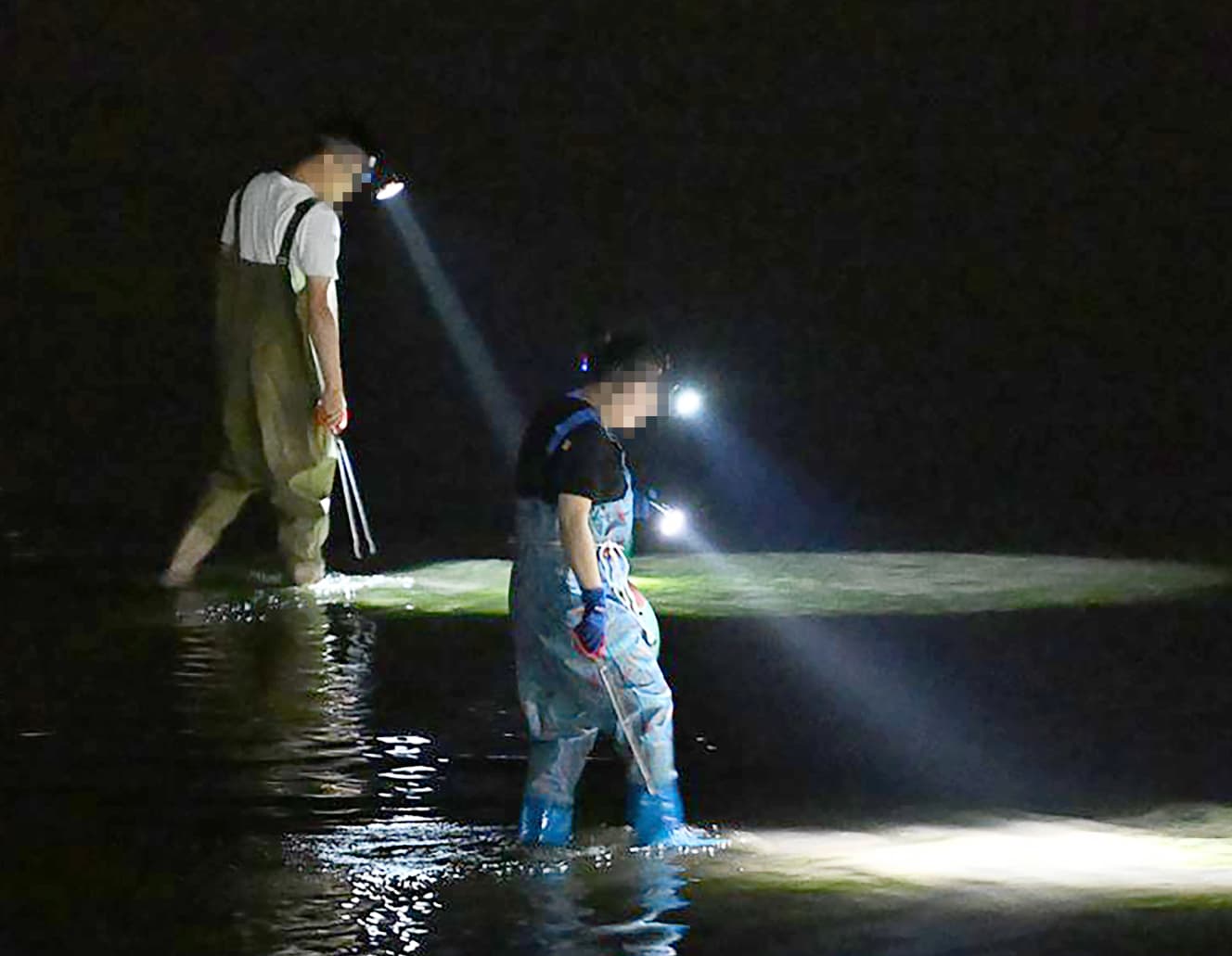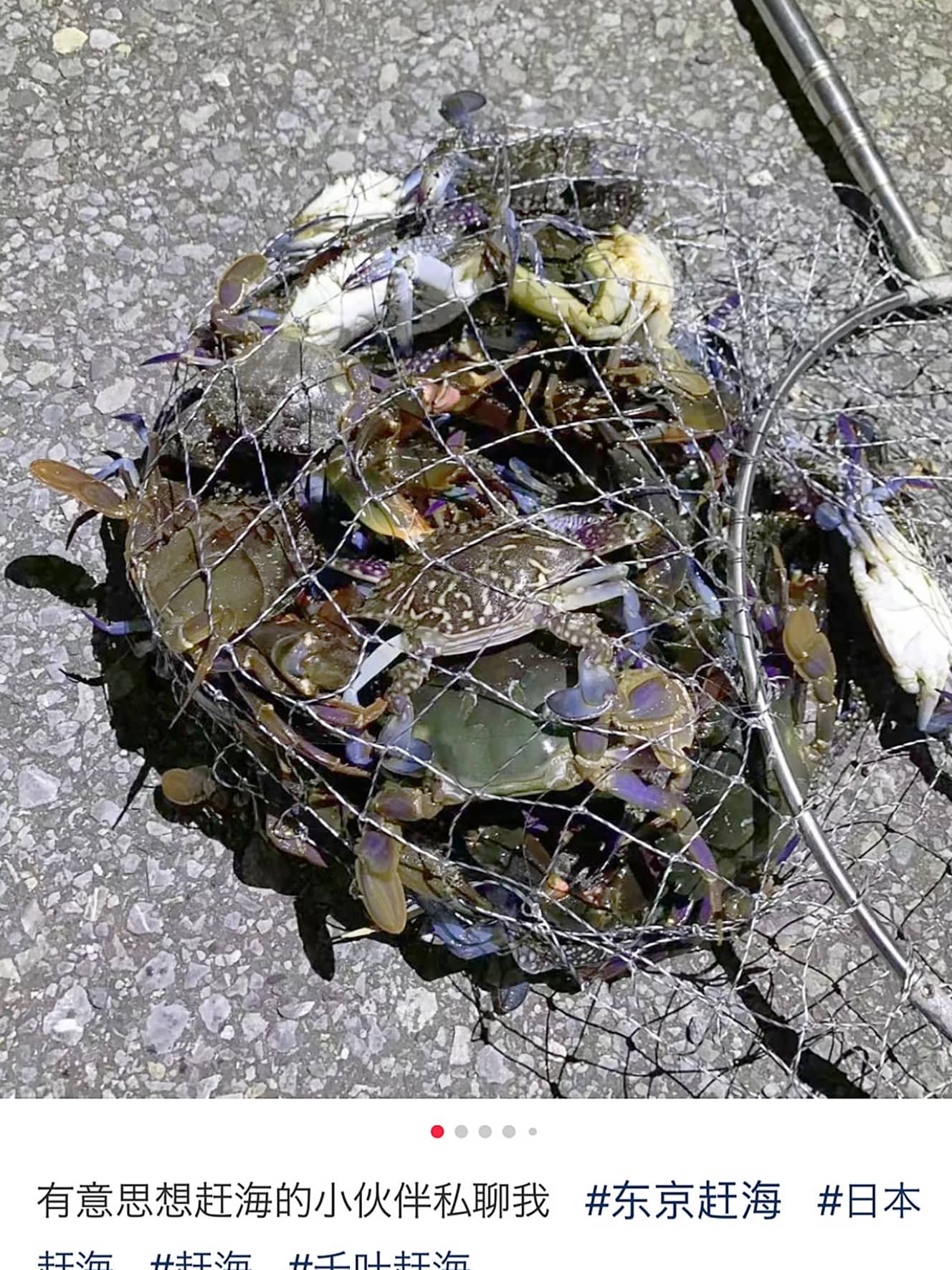Behind the stop of seafood imports due to the problem of treated water from nuclear power plants… A direct hit on Chinese poaching gangs who are “massively overfishing high-end shrimp & crabs!
[Kisarazu, Chiba Prefecture, Japan] They put on headlights and invaded from the shallows. ......

At 1:00 a.m. on a new moon, a number of luminous bodies were stirring on Beach A in Kisarazu City, Chiba Prefecture. When I looked closely to see if they were fireflies, I saw the shadows of about 10 people walking in the shallow water, knee-deep in the water and constantly poking at the shallows with large tongs. The source of light was the headlamps they were wearing.
After wandering along the shore for more than three hours, they came ashore in droves. They were carrying tongs in one hand and baskets in the other. The basket was stuffed full of blue crabs. Perhaps satisfied with their big catch, they were chatting and laughing from time to time. The language they were speaking was “Chinese.
On October 5, the second discharge of treated water from TEPCO’s Fukushima Daiichi Nuclear Power Plant began, and since the first discharge on August 24, China has taken steps to ban all imports of Japanese marine products, protesting that the water is “contaminated. At one point, Japanese administrative offices and restaurants were receiving unwanted phone calls all day long from people believed to be from China.
Meanwhile, some Chinese residents in Japan were “overfishing” Japanese marine products.
Residents living near the coast were outraged.
In the last few years,” said a resident who lives near the beach, “late at night during low tide, Asian foreigners have started coming to catch crabs. On the busiest days, there are 20 to 30 people in the sea. None of the locals catch and eat the crabs here, but they are so large that I fear they may be altering the ecosystem.”
Their actions are very likely in violation of Chiba Prefecture ordinances.
The act of using tongs to catch marine products by recreational fishermen (non-fishermen) is not allowed under Chiba Prefecture’s Fisheries Adjustment Regulations, and violators may be subject to a penalty of “a fine (payment of 1,000 yen or more but less than 10,000 yen)” (Chiba Prefecture Fisheries Department staff member).
In other words, in Chiba Prefecture, catching blue crabs with tools such as tongs can be considered “poaching.
Xiaohongshu, the Chinese version of Instagram, has a number of accounts dedicated to fishing and ebb and flow fishing in Japan. Prominent among them are a number of photos and videos purportedly taken in Chiba Prefecture, including the Kisarazu beach mentioned at the beginning of this article. Among them are not a few posts that seem to deviate from the scope of “recreational fishing.
As with the tongs, there are also many photos and videos of blue crabs and shrimp that appear to have been caught using crab nets and trap nets, the use of which is prohibited for recreational fishermen under the prefecture’s Fisheries Adjustment Regulations. Some accounts are even accepting orders to sell poached blue crabs and prawns. The price is 3,000 yen for a kilogram of blue king crab and 300 yen for a shrimp. We also found a post with “Kisarazu” written in Chinese.
Incidentally, selling marine products over the Internet as a business requires a food sanitation supervisor and, in some cases, a permit to engage in seafood sales.
As dawn began to set in, the “poachers” were divided into three groups, each trying to pull away by car. First, I asked two of the groups in Chinese about their “catch” and “perception of illegality,” but they ignored me, perhaps because of their fast pace.
Finally, I asked one of the last remaining groups a little more openly, “Is the blue crab caught here good?” I asked. One of the men answered laconically in Chinese, “The best…in October, the male crabs become plump, and as winter approaches, the females have eggs.
Finally, I also asked him if he was concerned about the possibility of radioactive contamination from the release of treated water, to which he snidely replied, “No, it’s not a problem.
The immersion problem (meiwenti). How big do you think the ocean is?”
Currently, the government is not moving to crack down on the problem. Japanese seafood is being “preyed upon” by China. That is the reality.




From the October 27, 2023 issue of FRIDAY
Reporting and writing: Yuuki Okukubo (Journalist) PHOTO: Takero Yui Supported by: Daisuke Hirose